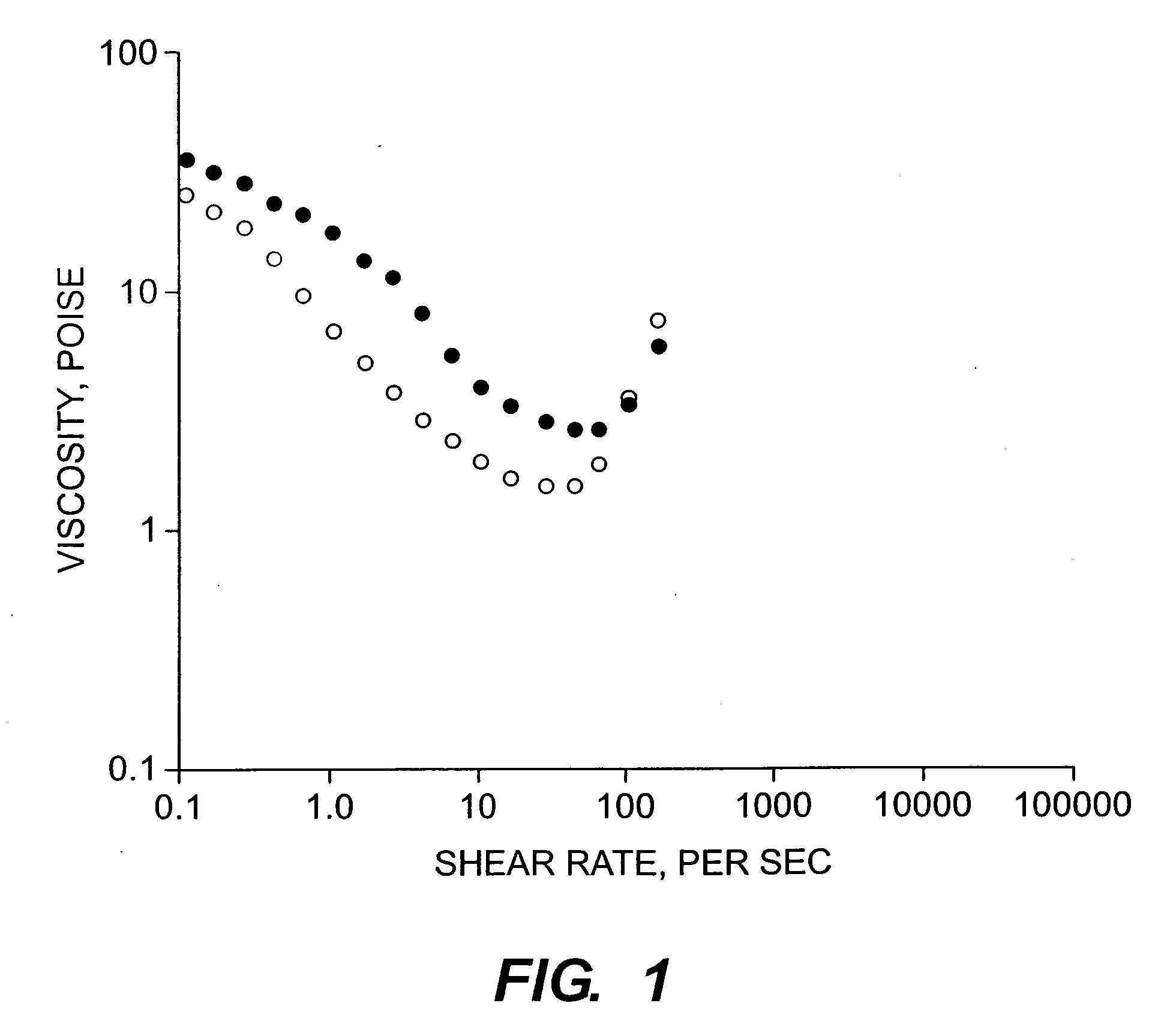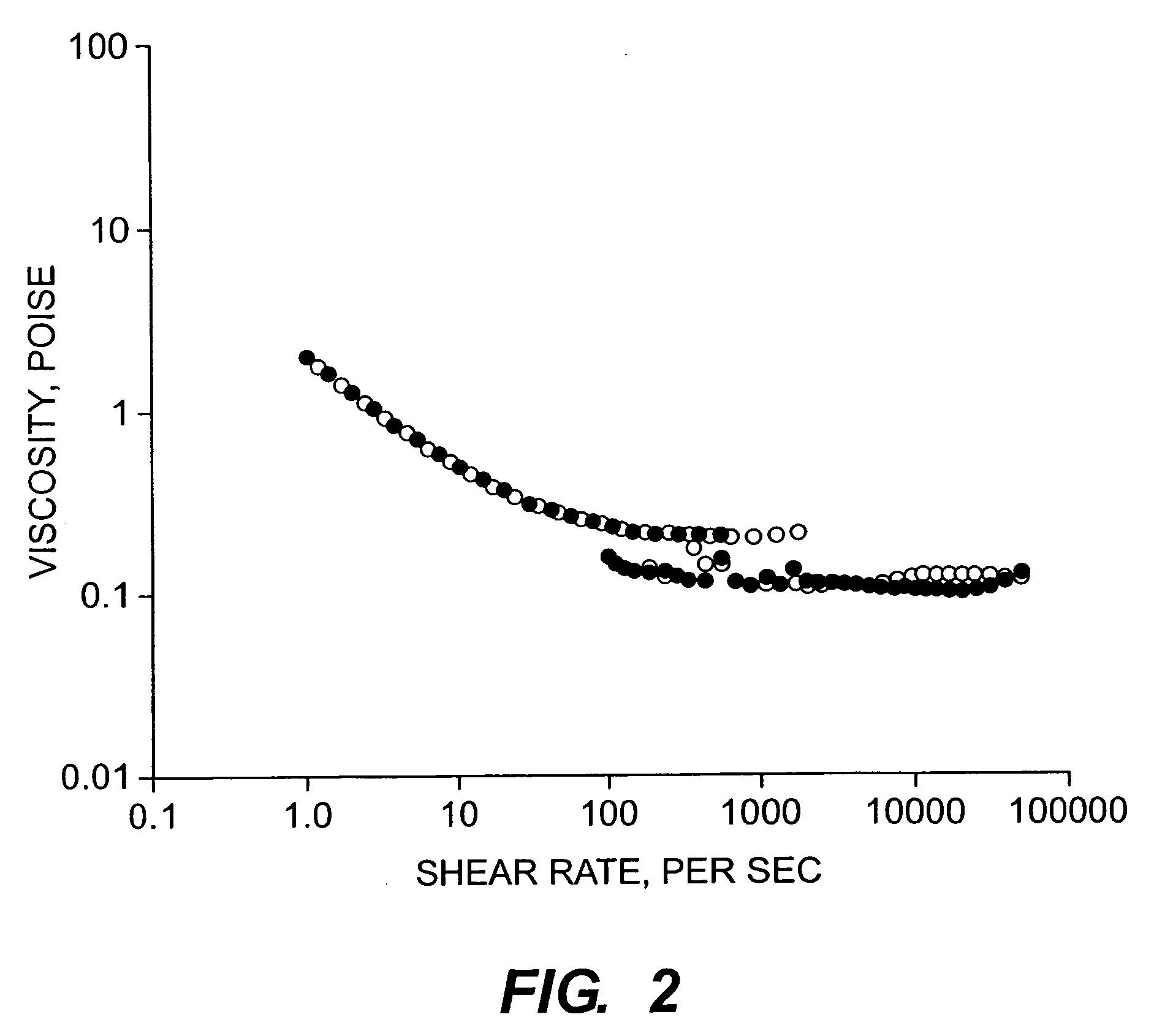Inkjet recording media comprising precipitated calcium carbonate
a precipitated calcium carbonate and inkjet recording technology, applied in the field of inkjet recording media and printing methods, can solve the problems of reducing the integrity of the coating, reducing the ink absorption, and not instantaneously drying to the touch of the imaged receiver or print, and achieves excellent dry time, high concentration, and high ink capacity.
- Summary
- Abstract
- Description
- Claims
- Application Information
AI Technical Summary
Benefits of technology
Problems solved by technology
Method used
Image
Examples
example 1
[0096] A coating composition was prepared comprising 46.55 parts ALBAGLOS S prismatic PCC (precipitated calcium carbonate), 49.11 parts ALBACAR HO-40 scalenohedral PCC, 0.16 parts COLLOID 211 dispersant, 2.09 parts CELVOL 325 PVA binder, and 2.09 parts CP692NA latex binder at a solids concentration of 53.5%. Shear thickening behavior was not found, and high shear viscosity was measured at 0.5 poise. This color was successfully coated by the rod method. In this case, the structured pigment was 51% of total pigment.
[0097] Thus, while the scalenohedral form of precipitated calcium carbonate by itself was not rod coatable, the mixture with the prismatic form could be successfully rod coated.
example 2
[0098] Coating colors were prepared according to the formula used for the Bristow measurements in Table 1 except that the solids were 50%. The relative proportions of ALBACAR HO-40 and ALBAGLOS S precipitated calcium carbonate (PCC) were 50:50, 55:45, 60:40, 65:35, 70:30, and 75:25. In all cases, shear thickening behavior was not found, and the high shear viscosity measured was about 0.28 poise.
example 3
[0099] This example shows the preparation of base layer coating compositions, at 50% solids, comprising even higher concentrations of scalenohedral calcium carbonate, up to 95% of the total precipitated calcium carbonate. A Comparative Coating Composition A was prepared comprising 50% solids, where ALBACAR HO PCC was 100% of the solids. (ALBACAR HO is a relatively smaller size scalenohedral PCC compared to ALBACAR 5970 precipitated calcium carbonate, mentioned above.) Since ALBACAR HO scalenohedral precipitated calcium carbonate (PCC) is commercially available as a 40% solids dispersion or as a solid, Comparative Coating Composition A was prepared using the available dispersion plus additional dry powdered ALBACAR HO PCC.
[0100] Inventive Coating Compositions B and C were prepared at 50% solids using a formula similar to Comparative Coating Composition A, but in which 25% and 5% of the ALBACAR HO was replaced by an equal weight of ALBAGLOS S, respectively. The compositions were obta...
PUM
| Property | Measurement | Unit |
|---|---|---|
| Length | aaaaa | aaaaa |
| Fraction | aaaaa | aaaaa |
| Percent by mass | aaaaa | aaaaa |
Abstract
Description
Claims
Application Information
 Login to View More
Login to View More - R&D
- Intellectual Property
- Life Sciences
- Materials
- Tech Scout
- Unparalleled Data Quality
- Higher Quality Content
- 60% Fewer Hallucinations
Browse by: Latest US Patents, China's latest patents, Technical Efficacy Thesaurus, Application Domain, Technology Topic, Popular Technical Reports.
© 2025 PatSnap. All rights reserved.Legal|Privacy policy|Modern Slavery Act Transparency Statement|Sitemap|About US| Contact US: help@patsnap.com


